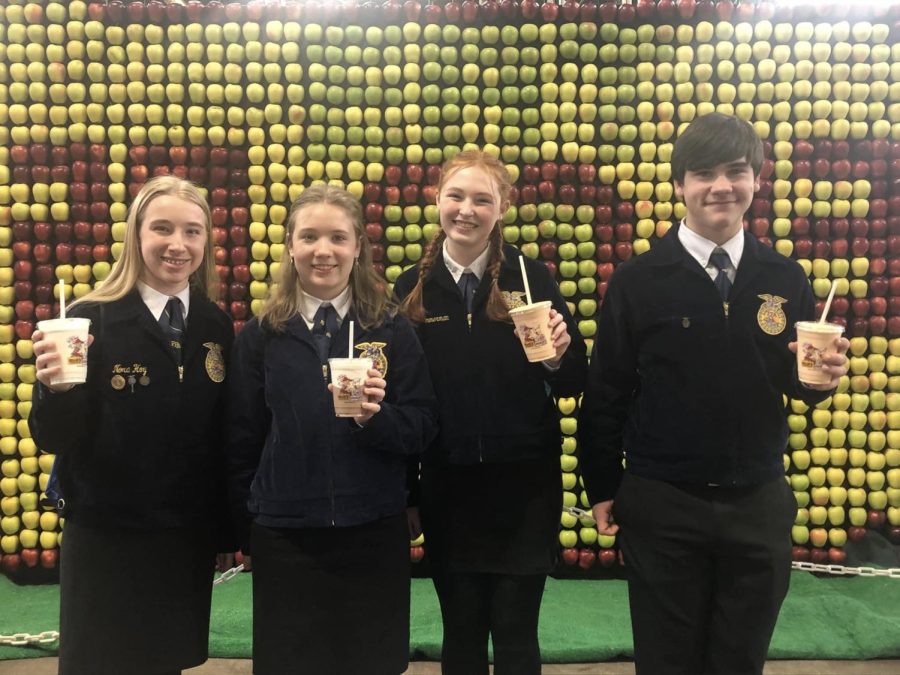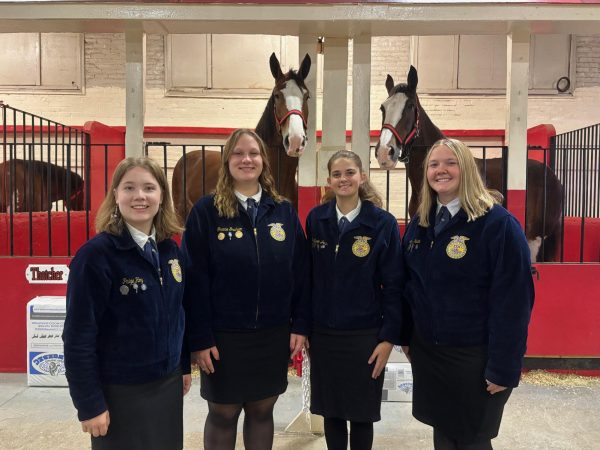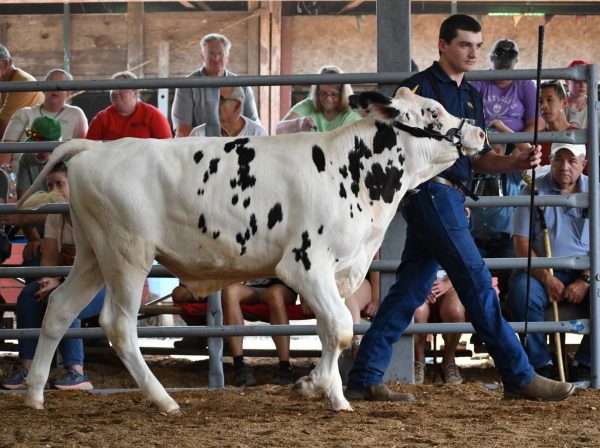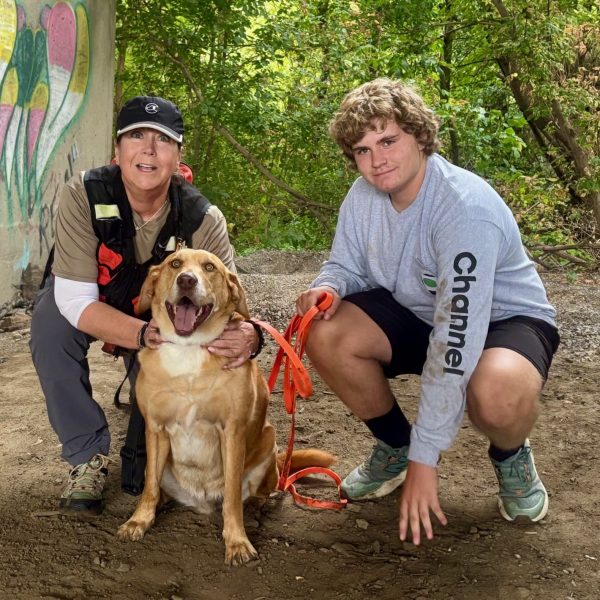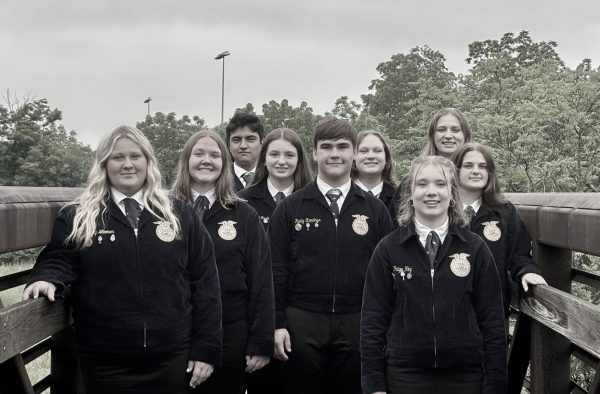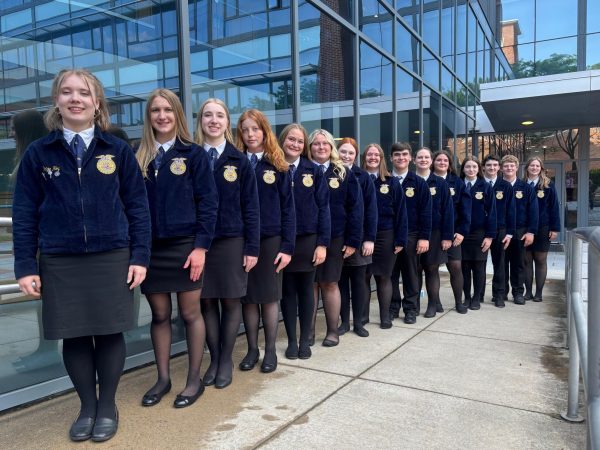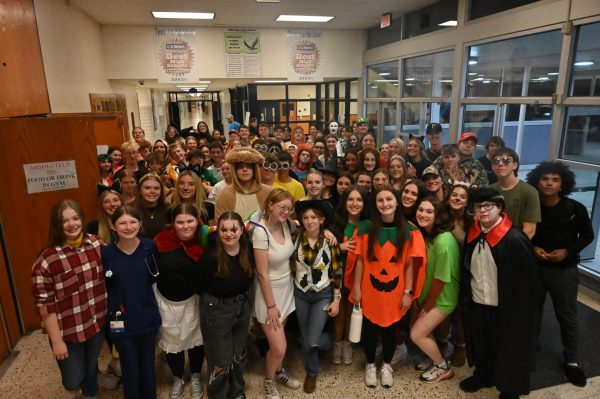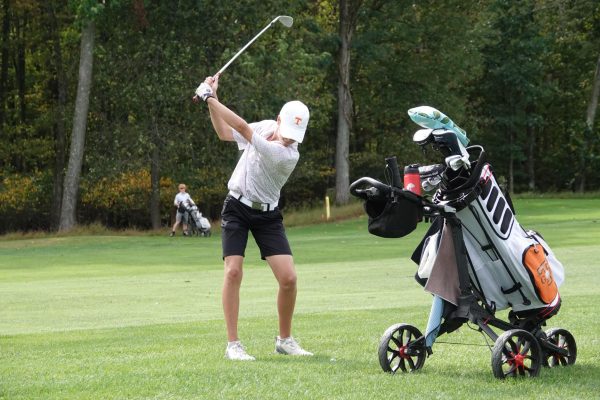Four FFA Members Place in Agriscience Fair
Nora Hoy, Paige Hoy, Sarah Zimmerman, and Reilly Rawlings.
Four Tyrone Area FFA members made the trip PA Farm Show AgriScience Fair on January 6th in Harrisburg. The students were there to present their research to a panel of judges and bid for a top spot at the state event.
Sophomore Sarah Zimmerman captured first place, freshman Reilly Rawlings received second place, and freshman Paige Hoy and sophomore Nora Hoy competed as a team and also earned first place.
The Agriscience Fair recognizes students studying the application of scientific principles and emerging technologies in agricultural enterprises. Fifty-five projects and just about 100 students competed at the event.
These members are working to better understand the people agriculture serves, as well as technical issues. All Tyrone Area FFA members are currently working on AgriScience Fair projects, but these individuals set a goal to compete at the Farm Show.
Sophomore Sarah Zimmerman earned first place in Power, Structure, and Technical Systems, Grades 9-10 Individual with her research on the flammability of wool.
“When growing up, I was always concerned with the future of the planet. During a vacation to Central America, I saw firsthand the limited resources many citizens of those countries had. Unlike America where fire protection is customary, Central and South American countries do not have the supplies for adequate equipment. I did know that those countries have different animals than America, one of which being an alpaca,” said Zimmerman. “Our family has two pet alpacas. I decided to do my experiment on the flammability of their wool, as I have lots of knitted materials of alpaca wool and had always wondered what made it different from sheep. With my interests in the deforestation of rainforests and alpacas, I began theorizing about fire protection when I heard of the deforestation occurring in those countries.”
Freshman Reilly Rawlings received second place in the Plant Systems category with his project on LED lights impacting the growth and yield of tomato plants.
“Tomato plants need light and warmer temperatures to grow and produce a yield of fruit for humans to consume. What effect do LED lights have on tomato plants? Using Light-Emitting Diode technology for plant cultivation under controlled environmental conditions can significantly reduce energy consumption. If LED lights were used to grow tomato plants, which color of LED light would affect the growth the most?” said Rawlings. “This AgriScience project was chosen because I am interested in learning what effect LED lights actually have on tomato plants, and which color would show the most growth in plants. I actually do not like tomatoes but I have grown them at my grandmother’s house in an unused flower bed. I believe this will help to curb the hunger crises by enabling farmers to grow tomato plants in climate control areas with artificial light.”
Freshman Paige Hoy and sophomore Nora Hoy competed as a team in Food Products and Processing Systems and were recognized for their research with a first-place award.
“This experiment was run to show how different solutes at various concentrates (salts and sugars) affect osmosis in a cell. Through discussions with our agricultural educator and previous observations in the Ag room, we began to conduct research to determine how osmosis impacts human and animal cells. Both of us are also active dancers and were interested in how the different solutes may be impacting our own bodies in regard to physical performances and intense training,” said N. Hoy.
All the competitors said that they plan to continue with more trials of their research and compete in the Pennsylvania FFA State AgriScience Fair competition this spring.



